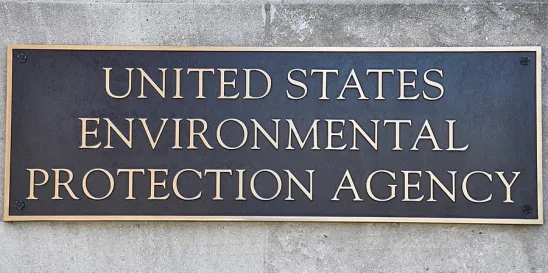Every now and then, we call your attention to publications from the federal government that are must-reads. The U.S. Environmental Protection Agency (EPA) Office of Enforcement and Compliance Assurance’s (OECA) memorandum on Climate Enforcement and Compliance Strategy is one of those.
This memorandum from David Uhlmann, assistant administrator of OECA, announced on Sept. 28, is the most recent and potentially far-reaching of the administrations’ climate initiatives. The administration’s climate campaign began the first week in office with issuance of Executive Order 14008 on Jan. 27, 2021, directing all federal agencies to tackle the climate crisis and historical environmental injustice using a whole of government approach. In March 2022, the EPA established, as the No. 1 goal of its five-year strategic plan, aggressive action to take on the climate crisis by reducing greenhouse gas (GHG) emissions and anticipating, preparing for, and adapting to or recovering from the impacts of climate change.
On Aug 17, the OECA announced it will focus enforcement and compliance resources on mitigating climate change as one of its National Enforcement and Compliance Initiatives by noting, “OECA selected Mitigating Climate Change as a new NECI because tackling the climate crisis is EPA’s top priority, and enforcement and compliance efforts that reduce greenhouse gas emissions will help limit the worst effects of climate change.”
Just a month later, OECA built on – and went further than – the targets set in its climate enforcement initiative with the climate strategy memo:
“The strategy announced today goes further and requires EPA’s enforcement and compliance program to fairly and vigorously enforce the full array of EPA’s climate rules, including, but not limited to, greenhouse gas (GHG) reporting requirements and limits on other climate pollutants such as carbon dioxide and nitrous oxide. As new climate rules are developed, they will be prioritized as well.”
To meet the urgency of this moment, the OECA set the following three requirements that will apply across all EPA enforcement and compliance activities, including criminal, civil, federal facilities, and cleanup enforcement:
- Prioritize enforcement and compliance actions to reduce greenhouse gas emissions
- Include climate adaptation and resilience in into all enforcement and compliance and activities and case conclusions whenever appropriate
- Provide technical assistance to achieve climate-related solutions and build climate change capacity among EPA staff and state and local partners
Keen Eye on Climate During Case Development Process
Of particular importance for environmental practitioners and the regulated community, the OECA directed, “Enforcement staff should ensure consistent consideration of climate change during the case development process and incorporate relevant climate mitigation considerations in administrative actions, civil referrals, consent decree approval requests, and referrals for criminal prosecution sent to the Department of Justice.” This includes anticipating and accounting for future extreme weather events when resolving regulatory enforcement cases by including relief that will be resilient to the projected impacts of climate change.
The memorandum also encourages enforcement teams to incorporate “greener cleanup provisions” in CERCLA and RCRA settlements and green infrastructure provisions in Clean Water Act settlements.
One of the more positive aspects of the memorandum is the express provision for consideration of clean renewable energy solutions, green infrastructure cleanup responses, and other climate mitigation remedies as Supplemental Environmental Projects (SEPs) in civil cases and Community Service Projects in criminal cases. Clean and renewable energy projects that may be considered as mitigation or SEPs include wind, solar, and vehicle electrification.
The administration and the EPA’s efforts to apply the whole of government approach to environmental justice have been ongoing for some time with mixed results. However, the elevated priority being given to fighting climate change by all federal agencies, together with the specific directions for aggressive enforcement set forth in the Climate Strategy Memo, are likely to have immediate and far-reaching effects on the regulated community.




 />i
/>i
